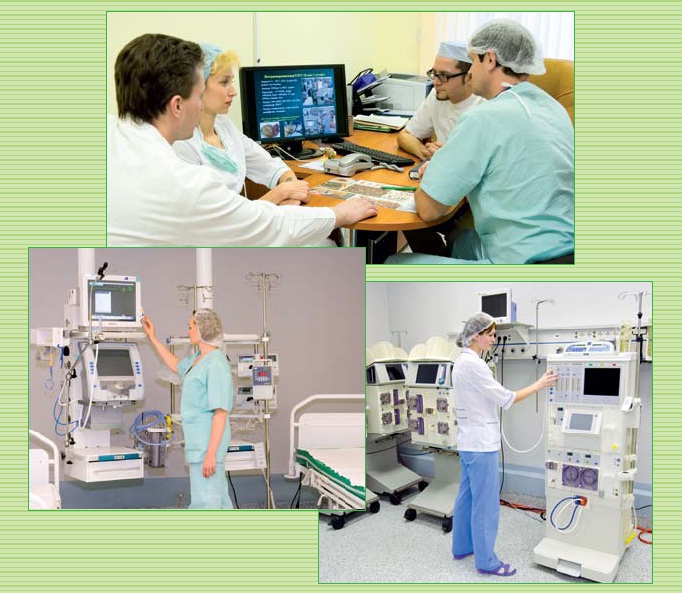Department of Anesthesia and Intensive Care No.2 (for surgical patients)

Chief of the Department
Maksim L. Katin
Phone: +375 (17) 277-10-72
The core activity of the staff is to provide intensive care to the patients before and after surgery and after transplantation. The anesthesiologists and intensivists took training at the leading clinics of the Russian Federation and Western Europe. The nurses are experienced and skillful.
The department has the state-of-the-art equipment, including vital signs monitoring systems, respiratory equipment, ultrasound machines, adjustable beds with the systems for preventing pressure sores, etc.
The patients, who underwent organ transplantation, stay in a special ward with a built-in air cleaning and conditioning system.
The facilities of the department enable to provide extracorporeal treatment, including a full range of renal replacement therapy (hemodialysis, hemofiltration and hemodiafiltration), plasmapheresis and bioartificial liver device (PROMETEUS technique)
The core research activities:
- improvement of the methods of postoperative pain relief (after major traumatic surgery) based on the multimodal analgesia concept using thoracic epidural analgesia, paravertebral analgesis or TAP block;
- application of a prolonged renal replacement therapy in intensive critical condition care, plasmapheresis, bioartificial liver device in the patients with kidney or liver failure;
- development of modern clinical nutrition protocols (parenteral (intravenous) and enteral nutrition) in patients with various intensive care pathology;
- development and improvement of patient management protocols, including children patients, after transplantation of liver, kidney or pancreas;
- use of latest technologies with a view to enhancing the safety and efficiency of intensive care, i.e. invasive monitoring of hemodynamics (PICCO plus monitor), use of ultrasound during cannulation of veins and introduction of blocks.
The staff of the department has necessary knowledge and equipment to effectively treat postoperative patients.
